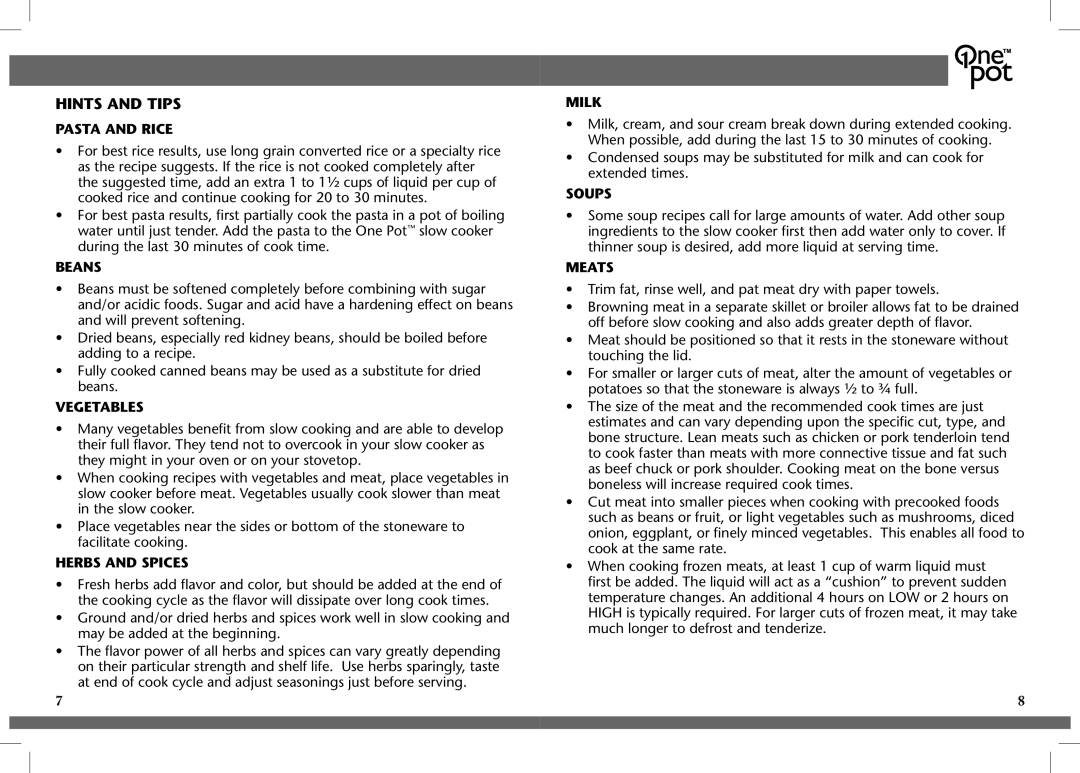OnePot specifications
The Crock-Pot OnePot is a versatile kitchen appliance that redefines the way we think about cooking at home. Known for its multiple functions, this innovative device combines the features of a slow cooker, rice cooker, steamer, and sauté pan all into one. This versatility makes it an essential tool for busy households looking to save time while preparing delicious, homemade meals.One of the primary features of the Crock-Pot OnePot is its programmable settings. Equipped with preset cooking options, users can choose from various cooking methods and times, allowing for precise control over meal preparation. Whether you prefer slow cooking a stew over several hours or using the pressure cooking function for a quick meal, the OnePot has you covered.
Another standout feature is its advanced cooking technology. The OnePot utilizes 3D heating technology to ensure consistent and even cooking. This technology allows heat to circulate evenly around the food, eliminating cold spots and ensuring that every dish is cooked to perfection. Additionally, the appliance is designed with a non-stick interior, making cleanup a breeze and preventing food from sticking to the surface.
Safety is a paramount concern in any kitchen, and the Crock-Pot OnePot comes equipped with a host of safety features. It includes a secure locking lid that prevents spills and ensures that the cooking process remains contained. There are also built-in safety mechanisms that regulate the pressure and temperature, providing peace of mind while cooking.
In terms of design, the Crock-Pot OnePot boasts a sleek and modern aesthetic, making it an attractive addition to any kitchen counter. Its compact size ensures that it doesn’t take up too much space, which is ideal for those with limited kitchen areas. The included easy-to-read LED display allows users to monitor cooking status at a glance and adjust settings as needed.
Finally, the OnePot is also energy-efficient, consuming less power than traditional ovens. This feature not only helps to lower energy bills but also makes it a greener choice for environmentally conscious consumers.
In summary, the Crock-Pot OnePot stands out as a multifunctional cooking appliance that integrates modern technology, safety, and convenience. Its ability to handle a variety of cooking methods while remaining user-friendly makes it a popular choice for anyone looking to streamline their meal preparation process.

